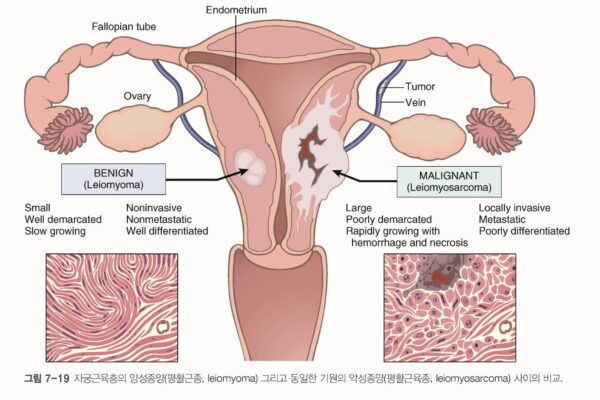The Ultimate Showdown: 8-Constitution vs. Sasang Constitutional Medicine – Which of the 2 Is Right for You?
The history of science is rarely a smooth path. It is a dramatic saga of conflict, debate, and revolution. New theories, destined to shine in the future, must constantly challenge the established classics.
When Galileo took the stage to declare the Earth revolved around the Sun, the doctrines of the Church were turned upside down. Like the climax of a film, a new chapter in astronomy began. In the realm of physics, the emergence of quantum mechanics sparked intense debates with traditional physicists. These clashes and conflicts, far from being destructive, became the very catalysts that drove the advancement of human knowledge.
Today, a similar drama is unfolding in the world of traditional Korean medicine. The challenger is 8-Constitution Medicine, and it has thrown down the gauntlet to Sasang Medicine, the current mainstream constitutional theory. The heat of this debate is intensifying.
The Established Champion: Sasang (4-Type) Medicine
For decades, Sasang constitutional medicine has been the bedrock of personalized Korean medicine. It is a core part of the official curriculum in Korean Medicine universities and is widely practiced in clinics. Developed by Dr. Lee Je-ma in the late 19th century, this system classifies people into four distinct types based on their physiological and psychological traits:
-
Taeyang-in (Greater Yang)
-
Taeeum-in (Greater Yin)
-
Soyang-in (Lesser Yang)
-
Soeum-in (Lesser Yin)
Each type has a unique organ structure, inherent strengths and weaknesses, and responds differently to specific foods, herbs, and treatments. For generations, this framework has successfully guided practitioners in treating patients according to their innate bodily nature.

The Bold Challenger: 8-Constitution Medicine
Rising to challenge this established order is 8-Constitution Medicine. Proponents of this newer theory see the discovery of Sasang medicine as a monumental achievement. However, they argue that it is an incomplete picture.
Developed by Dr. Kwon Dowon in the mid-20th century, 8-Constitution Medicine posits that there are not four, but eight distinct body types. This theory places immense importance on a specialized pulse diagnosis method (Chejilmaekjin) to accurately identify a person’s constitution. It also utilizes a highly specific system of constitutional acupuncture, where treatment points are chosen based on the patient’s type to restore balance among their organs.
Interestingly, while Sasang remains the academically accepted theory, online search volume tells a different story. In the court of public curiosity, 8-Constitution Medicine is currently leading, suggesting a growing public interest in its more granular approach.
The Source of the Debate: Old Guard vs. New Wave
The primary reason for this ongoing debate stems from history and adoption. 8-Constitution Medicine is a relatively recent development. Because it is not yet part of the formal university curriculum, a smaller number of practitioners specialize in it. This creates a natural divide between the academic mainstream and a dedicated group of clinical specialists who champion the 8-Constitution model.
So, which theory should one trust? Which is the “correct” standard to follow?
The most practical answer is that time will reveal the outcome naturally. It’s also crucial to understand that these two systems are not necessarily mortal enemies. They are branches of the same tree. We will likely see a period of coexistence and compromise, where insights from both are valued.
For now, you can consider both to be valid. The best course of action is to follow the guidance of a trusted healthcare professional whose approach resonates with you and, most importantly, improves your health.
A Bridge Between Worlds: Explaining the 8 Constitutions Through Sasang
Because 8-Constitution Medicine has its roots in Sasang, we can use the 4-type model as a simple and effective bridge to understand the 8 types. While purists from both camps might dislike this simplification, it offers a powerful framework for beginners.
The 8 Constitutions are essentially subdivisions of the 4 Sasang types, each with a secondary influence.
-
Colonotonia: Primarily Taeyang-in (Greater Yang), with a slight tendency of Soeum-in (Lesser Yin).
-
Pulmotonia: Primarily Taeyang-in (Greater Yang), with a slight tendency of Soyang-in (Lesser Yang).
-
Cholecystonia: Primarily Taeeum-in (Greater Yin), with a slight tendency of Soyang-in (Lesser Yang).
-
Hepatonia: Primarily Taeeum-in (Greater Yin), with a slight tendency of Soeum-in (Lesser Yin).
-
Vesicotonia: Primarily Soeum-in (Lesser Yin), with a slight tendency of Taeeum-in (Greater Yin).
-
Renotonia: Primarily Soeum-in (Lesser Yin), with a slight tendency of Taeyang-in (Greater Yang).
-
Gastrotonia: Primarily Soyang-in (Lesser Yang), with a slight tendency of Taeyang-in (Greater Yang).
-
Pancreotonia: Primarily Soyang-in (Lesser Yang), with a slight tendency of Taeeum-in (Greater Yin).
What can we realize from this mapping? It reveals that constitutional medicine isn’t about fitting people into rigid, separate boxes. Instead, it suggests a spectrum of human physiology. Each person has a dominant constitutional nature but also carries shades of another, creating a more nuanced and unique personal profile. This is the profound insight that 8-Constitution Medicine brings to the forefront.
Ultimately, whether you explore the 4 classic types or the 8 nuanced ones, you are engaging in a powerful journey of self-understanding. This debate is not just an academic squabble; it is the living, breathing evolution of medicine, striving to better understand the beautiful complexity of the human body.
For the original Korean text, visit here. If you’re curious about the basics of traditional Korean medicine and health, read the following article: The Truth About 8 Constitution Medicine: A Revolutionary Healing Framework Explained Key Concept in 8, Eight-Constitution Medicine: Optimal Imbalance (What Constitutional Diagnosis Really Means) What Your Sleeping Position Says About Your Health Learn Why Studying JangSang Medicine is Important. Frequently Asked but Silly Questions (Foods Good for the Liver??)
